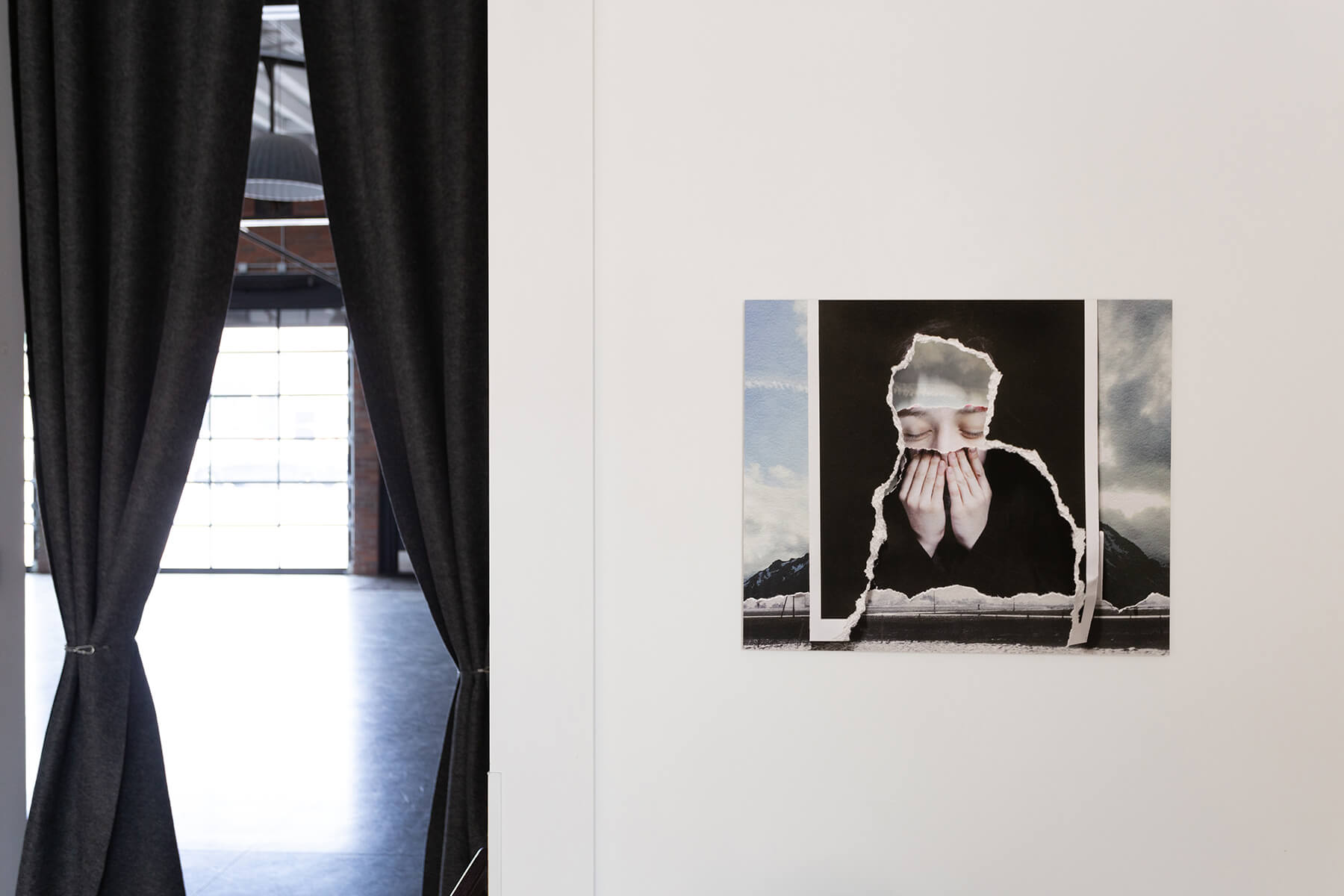INSIGHT
Being a Curator
WITH MIA DALGLISH AND LISA WOODWARD
AN INTERVIEW WITH MIA DALGLISH AND LISA WOODWARD
“If we can remember some of the photographs later, when we close our eyes, then we know they have staying power to cut through the noise of the millions of images we all encounter.”
We’re delighted to have Mia Dalglish and Lisa Woodward – co-curators at Pictura Gallery at the FAR Center for Contemporary Arts in Bloomington, Indiana – as the judges for our Edition IX Series Award. The ultimate winner will receive a solo exhibition at Pictura Gallery, with Mia and Lisa at the helm of the curatorial process.
But curation itself is an often misunderstood profession. What exactly does it entail? How do you find your way into it? And what separates a good show from a great one? We explored these questions and more with Mia and Lisa, as well as asking them exactly what they’ll be looking for when they judge the Series Award submissions….
BANNER IMAGE: EXHIBITION – GALINA KURLAT AND SYLWIA KOWALCZYK: ANATOMY OF LOSS
Tell us a little bit about your routes into curation.
We both came to the role a little unexpectedly. We each began our careers as artists and professional photographers. After RISD, I (Lisa) was working at Pictura as a gallery assistant, voraciously reading about photography and looking through imagery. I would often bring young, unknown photographers to the owner’s attention, and shortly after they would appear in magazines with awards, or with shows in excellent galleries. At a certain point, he looked at me and said “I think you should be doing this. Why don’t you find us our next photographers.” After a successful run of shows, I became the curator for the institution. It was a highly unusual move for a gallery owner to cede this part of the job, and it has changed my life considerably.
Mine (Mia) was somewhat unusual as well. I had been working as a photographer before I came to Pictura. When I started at the gallery, Lisa was very generous in the way she involved me. I was excited to recommend artists that I knew or that I had met while working at ICP in New York. We organically began developing the shows together more. The collaborative process was so rewarding, that we continued working this way.
We never know how to recommend a clear path to others to becoming a curator, because our own were so unconventional. Both our roles came like an unexpected gift, from people trusting our visions.
It’s one of those roles that might feel somewhat opaque to those new to the art world. What does it entail? And are there misconceptions you regularly hear?
There are two different jobs that fall under the term curator, and it can be helpful to quickly distinguish them. A museum curator is responsible for the care of a particular collection, ensuring that the museum’s works are well-cared for and included in appropriate exhibits.
We work as exhibition curators for a non-profit gallery, which is a little different. We assemble six annual shows of the best contemporary photography we can find. This means that we are constantly researching what’s being made in the field, sifting through images, and determining which projects will challenge and speak to our audience. Once we’ve agreed to work with an artist, we create a mock-up of the show and then handle every detail, including production, framing when needed, budgeting, shipping, insurance, wall patching, etc. We also write about the art, with the goal of clear and accessible text that will open up understanding for the viewers.
You’ve co-curated at Pictura Gallery for 13 years – a pretty formidable partnership by any standard! Why do you think you work so well together? Is there a natural division of labor, or do you mix it up show to show?
Our partnership is uncommon. We work in a highly collaborative way on most things- from the selection of artists we show (we must both agree), to the edits, to some of the writing. We even give portfolio reviews together.
A big reason that our partnership works so well is that we both value the collaborative process. It doesn’t let you settle into a default- there is constant questioning, learning, and growth happening. At a certain point, we realized that while we could each do the job separately, something infinitely more interesting and thoughtful happens when we work together (and it’s way more fun.) There is a strong overlap in our priorities and aesthetics, but I (Mia) definitely pull a little harder towards the dark brooding work, and Lisa pulls more towards a sense of ethereal beauty. So we both challenge each other’s aesthetic a little and pull each other a bit out of our comfort zones. And while we have been known to finish each other’s sentences, it’s not because we agree on everything. In fact, the disagreements are part of our process and the resulting dialogue helps us both learn and evolve.
And what about the ways in which you collaborate with the artist. Does that vary significantly from photographer to photographer?
Some artists ship us a show that is framed and ready for the wall. Other shows require a lot of collaborative work in production. But we usually shape the show together as a team in some way, and we work with artists on image selection, sequencing, sizing, framing, and a collective brainstorm for other modes of presentation. This is all usually conducted through Zoom and by hordes of emails.
We love the process, and we get to know both the artist and the project really well. Hopefully we bring some insight about how to create a successful show in our particular space. Together though, we all come up with something a little different than we would on our own, and for us, that’s exciting.
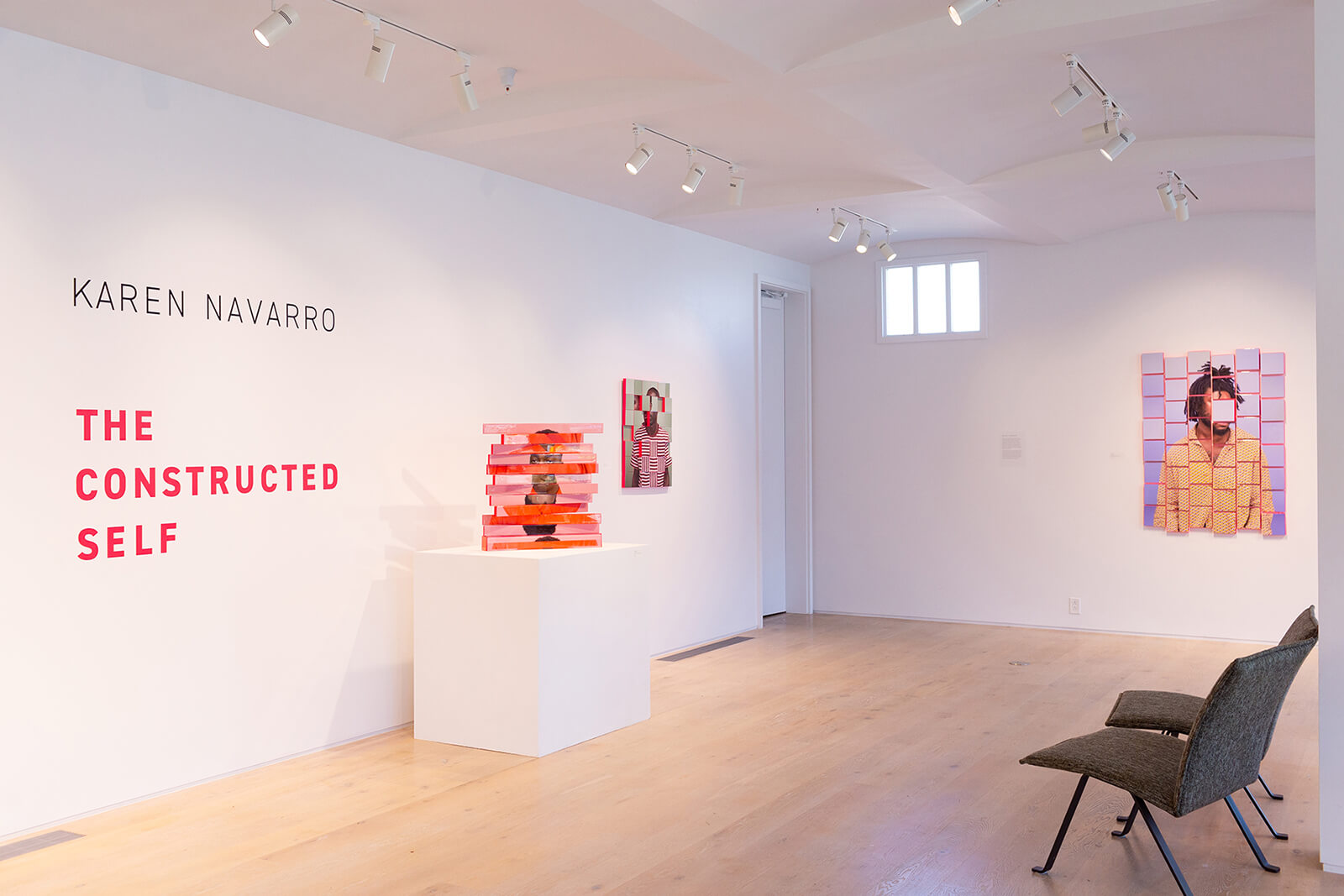
EXHIBITION – KAREN NAVARRO: THE CONSTRUCTED SELF
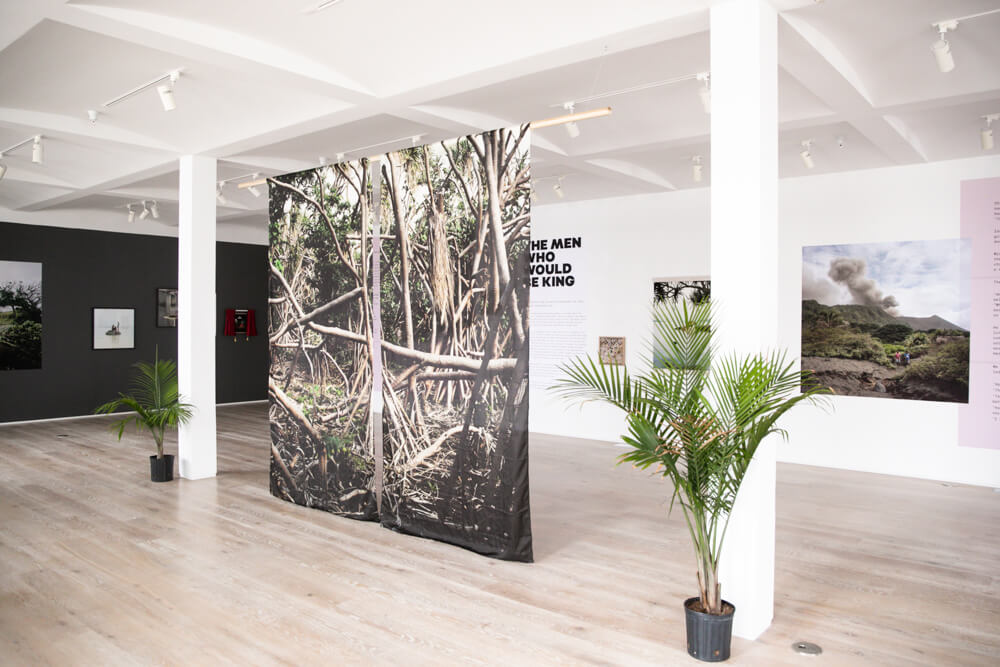
EXHIBITION – JON TONKS: THE MEN WHO WOULD BE KING
What’s your favorite part of the process?
We have many favorite parts. The physical work of hanging the show is a refreshing change of pace from sedentary work and such a fun team project. Putting up the wall vinyl, once everything is hung, is particularly satisfying. But we also love the initial step, meeting with artists as they share and discuss what they’ve made. It’s a personal, vulnerable exchange, and we take great care in handling these outpourings.
We also love the puzzle of finding the heart of a project, and then figuring out how to translate that into our space, or into a piece of writing. We learn so much from the artists; one of the most satisfying things is when we can come up with a fresh new way to convey their work.
And curating group shows vs. solo shows – do you have a preference?
The logistics for a group show calls for some octopus legwork, with prints coming in from many places. It can be a challenge to get all the disparate pieces to sit well together in the space. But it is uniquely satisfying to shape many parts into a cohesive whole. Working on a solo show is rewarding in a different way, building a relationship of trust with an artist to faithfully represent their work.
Two-person shows may actually be our favorite! When you put two projects together, a third thing happens; they begin to speak back and forth on the wall. The contrasts between them can heighten appreciation for what each artist is doing, and their similarities can help to flesh out and reinforce the broader themes.
Can you think of a show for which the curation and presentation particularly stood out for you, whether one of your own or otherwise?
Yes! I remember seeing an exhibition by Jann Gross in Arles in 2016 where he made his photographs into lightbox cubes, stacked them into pyramids, and arranged them along pathways in a dark room with ambient sound. And I thought “My God, there are still completely new ways to do this.”
What should emerging photographers think about when approaching galleries and curators? Is this something they should do at all? Are there common pitfalls?
Cold calls don’t often yield results. Honestly, portfolio reviews and competitions are one of the best ways to get undistracted eyes on your work. This being said, it is important to research the reviews and competitions and choose which makes the most sense for you to invest your time and resources. For us, an approach of personal connection is more effective than that of a salesperson.
And what about people specifically interested in curation – what would be your advice for them?
Curating comes from a sustained curiosity and interest in the things that others have made. If someone at an exhibition feels drawn to curating with the thought “I can do this better. I want to do this my way. I don’t like the artists included here”…. this is approaching the creation of a show with the ego first. And maybe this person should try putting a show together. But the attitude won’t likely yield much longevity through the unglamorous bulk of the job. If however, someone at an exhibition feels drawn to curating because they are completely fascinated by the art, with a kind of insatiable passion, to read and think and look, then this is a good seed for a long career, sustained by inquiry and admiration. In that case, it can be worth all the schooling recommended for placement in the field. (Although even that won’t guarantee a position. It’s a notoriously difficult job to land.)
One can also exercise the act of curating by putting an exhibition together at an alternate space, outside of existing institutions, as a way of exploring and trying out the process.
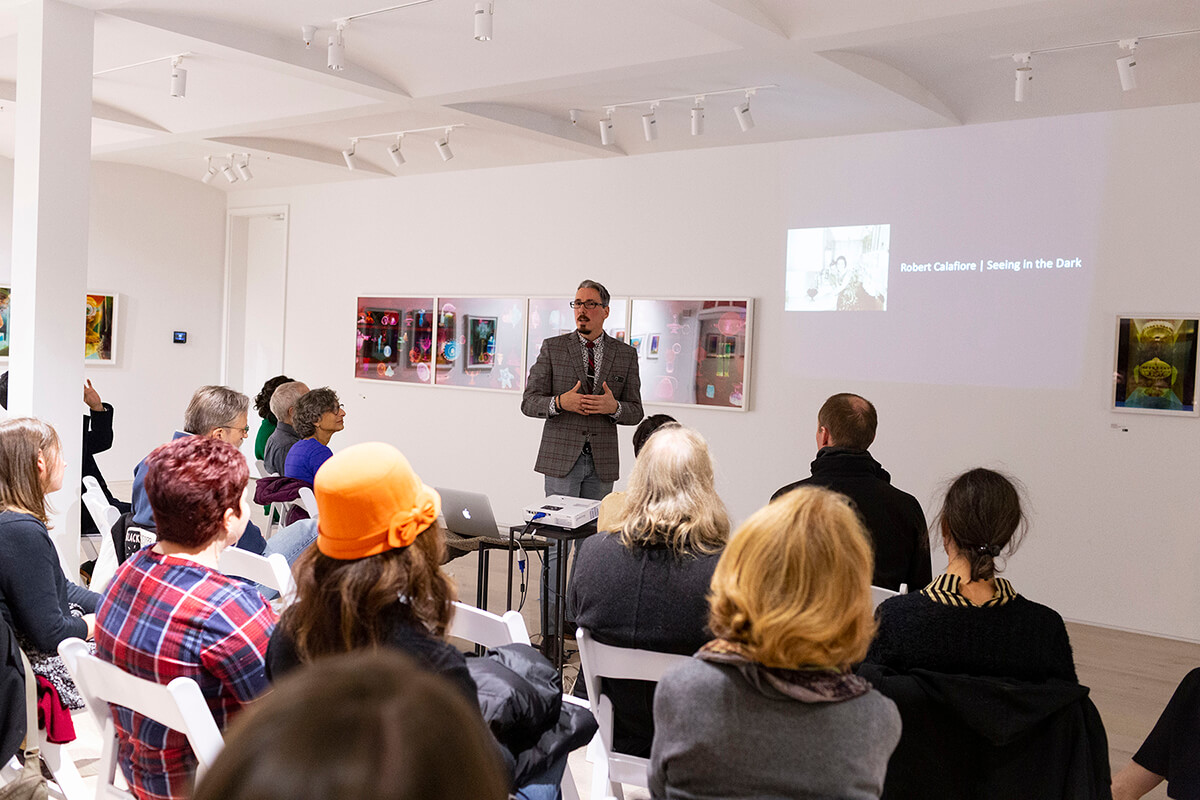
EXHIBITION – ROBERT CALAFIORE: SEEING IN THE DARK
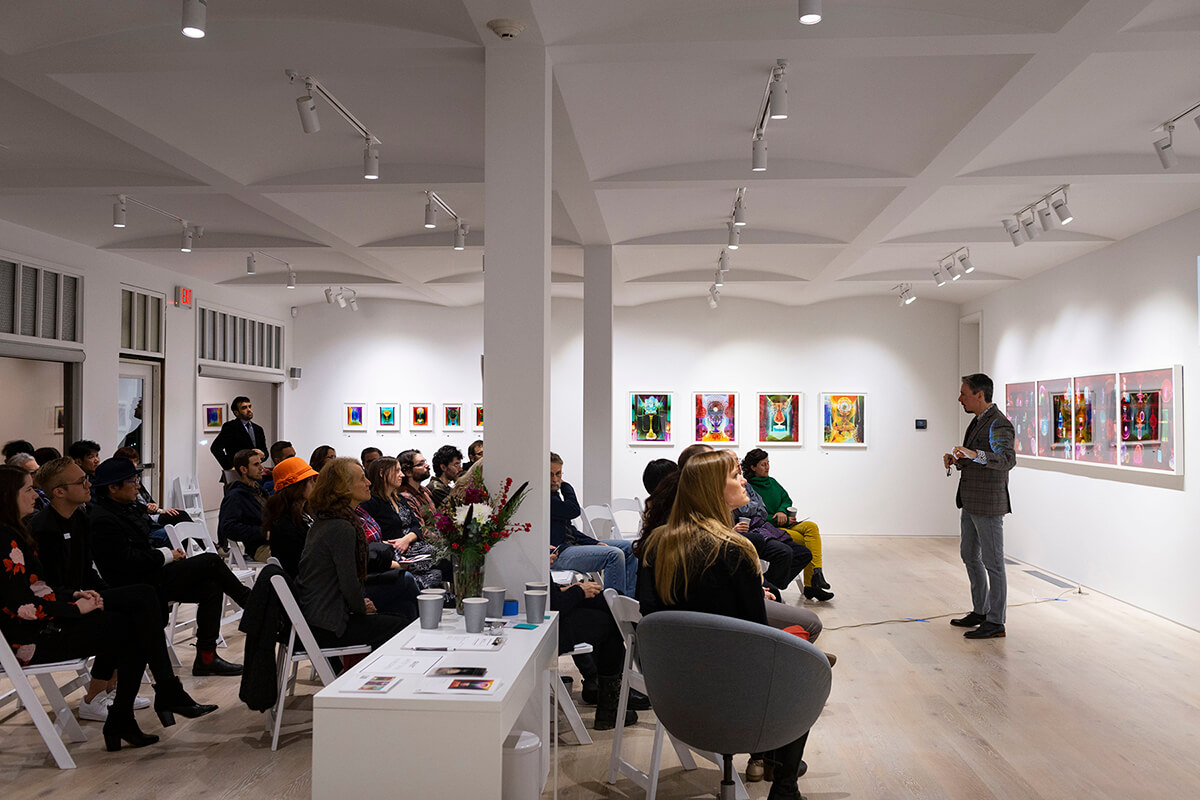
EXHIBITION – ROBERT CALAFIORE: SEEING IN THE DARK
Are there any emerging themes or trends in photography that you find particularly compelling?
There are always thematic trends that crop up (there was a whole year with so many projects about hunting.) The trends come and go. A lot of work right now is born of political anger and frustration, reactions to the pandemic, work on climate change. These are worthy subjects, and yet, it’s very difficult to make the art as urgent as the concern.
We have noticed a growing body of work by women speaking with honesty about their lives in their photographic projects, about aging, and societal roles. We see photographers tackling religious ideas with more nuance than in the recent past. We’ve seen some great traditional color photography, with artists using color expertly and in intentional ways to tell their stories. We’ve also seen a bit of smart levity, which is very welcome.
There is a steady interest in the use of traditional and even antique photographic processes, to speak about contemporary concerns. People seem to want to take a lot of time to make objects, in a kind of direct opposition to modern photography’s instantaneous and disposable form.
We’ve seen photographers pushing into objectness in other ways, layering photographs with other mediums, using collage, adding paint and string, gold leaf, messing with emulsions, cutting and reassembling prints, and merging them into sculptural forms.…
Regardless of the theme, we find it most compelling when artists are careful to put meaning behind every tool and material choice, to merge their ideas and their output. Not all attempts are successful, but the search for an authentic voice is worth the pursuit.
And finally, we’re fortunate to have you as judges for our Series Award. Will there be specific things you’re looking for when judging the submissions?
We hope to be moved by a project. This can happen from work that is enchantingly crafted or that uses the medium in a surprising way. We can also be moved by unexpected tenderness, or a concept that engages a kind of mental awakening. If we can remember some of the photographs later, when we close our eyes, then we know they have staying power to cut through the noise of the millions of images we all encounter.
When judging work in general, we look for a rare balance in aesthetics, conceptual and emotional content, and technique, packed into one project. A project that relies too heavily on any one of those components alone ends up feeling one-dimensional or flat. We love work that has depth and that calls for a longer look on every level. If a project is emotionally engaging, visually memorable, and proficiently executed, then it’s a contender.
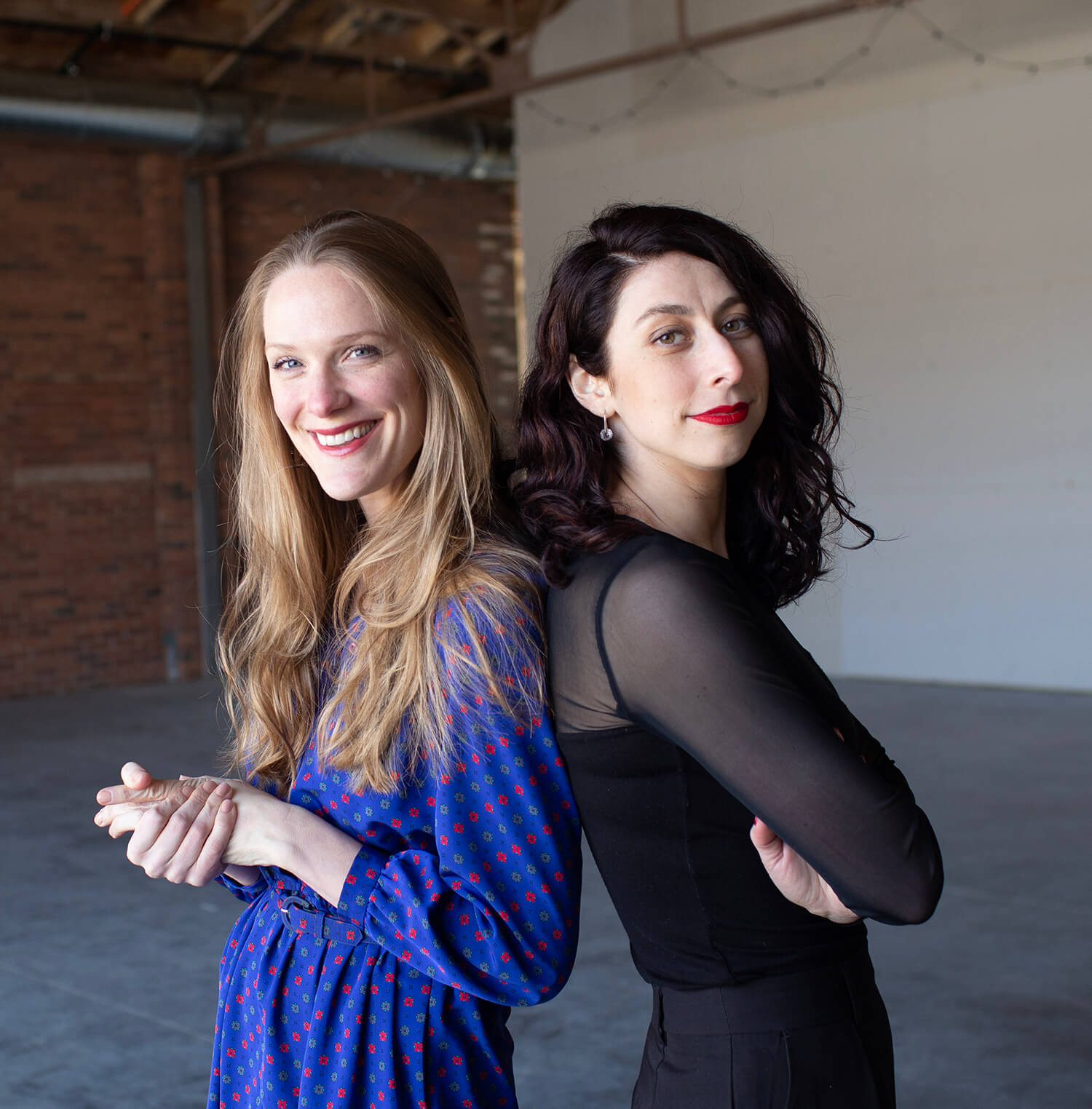
LISA WOODWARD (L) AND MIA DALGLISH (R)
All images © Pictura Gallery
See more at www.thefar.org/pictura-gallery and on Instagram: @picturagallery
